Related Research Articles
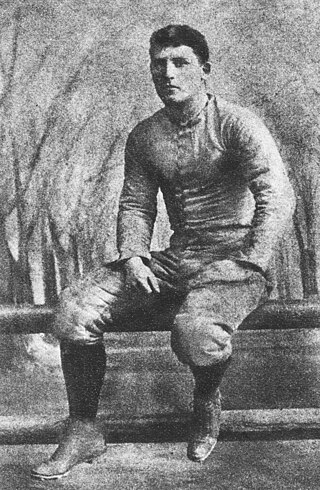
Amos Alonzo Stagg was an American athlete and college coach in multiple sports, primarily American football. He served as the head football coach at the International YMCA Training School (1890–1891), the University of Chicago (1892–1932), and the College of the Pacific (1933–1946), compiling a career college football record of 314–199–35 (.605). His undefeated Chicago Maroons teams of 1905 and 1913 were recognized as national champions. He was also the head basketball coach for one season at Chicago (1920–1921), and the Maroons' head baseball coach for twenty seasons.

Fielding Harris Yost was an American college football player, coach and athletics administrator. He served as the head football coach at: Ohio Wesleyan University, the University of Nebraska, the University of Kansas, Stanford University, San Jose State University, and the University of Michigan, compiling a coaching career record of 198–35–12. During his 25 seasons as the head football coach at Ann Arbor, Yost's Michigan Wolverines won six national championships, captured ten Big Ten Conference titles, and amassed a record of 165–29–10.

Frederick Mitchell Walker, nicknamed "Mysterious", was an American athlete and coach. He was a three-sport athlete for the University of Chicago from 1904 to 1906 and played Major League Baseball as a right-handed pitcher for the Cincinnati Reds, Cleveland Indians, Brooklyn Superbas, Pittsburgh Rebels and Brooklyn Tip-Tops.

Edwin Regur Sweetland was an American coach, trainer, and athletic administrator at several universities. During his coaching career he was head coach of many sports including basketball, track and field, and rowing, but the majority of for his coaching work was in football. Though mainly known for football, he left his mark on several college athletics departments and other sports. This includes being the first athletic trainer at Ohio State University, the first paid coach of the Kentucky Wildcats men's basketball team, and the first coach of Syracuse University rowing team.
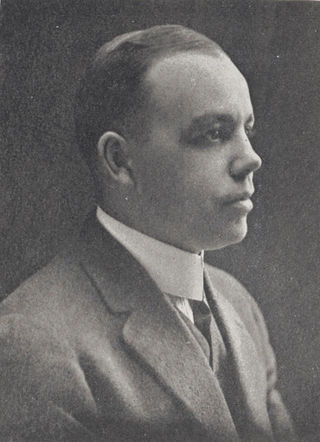
Mark Beal Banks was an American football, basketball and baseball player, coach, and college athletics administrator. He served as the head football coach at Central University of Kentucky—now known as Centre College—in Danville, Kentucky (1909–1911), Ohio Wesleyan University (1912), Ohio University (1913–1917), Drake University (1918–1920), the University of Tennessee (1921–1925), and Hartwick College (1941–1948), compiling a career college football record of 100–73–10. Banks was also the head basketball and head baseball coach at Ohio Wesleyan, Ohio, Drake, and Tennessee. He played football, basketball, and baseball at Syracuse University.

Sol S. Metzger was an American football player, coach of football and basketball, college athletics administrator, and sports journalist. He served as the head football coach at Baylor University (1904), the University of Pennsylvania (1908), Oregon State University (1909), West Virginia University (1914–1915), Washington & Jefferson College (1916–1917), Union College (1919), the University of South Carolina (1920–1924). Metzger was also the head basketball coach at South Carolina for one season in 1920–21, tallying a mark of 7–11. In addition, Metzger wrote a nationally syndicated sports column.

Homer Woodson "Bill" Hargiss was an American athlete and coach. He played American football and basketball and also competed in track and field events. Additionally, Hargis coached athletics at several colleges in the states of Kansas and Oregon. As an American football coach during the sport's early years, Hargis was an innovator. He was among few coaches in using the forward pass and the huddle, now staple features of the game.

Jesse Raymond Morrison was an American football and baseball player and a coach of football, basketball, and baseball. He served as the head football coach at Southern Methodist University, Vanderbilt University, Temple University (1940–1948), and Austin College (1949–1952), compiling a career college football record of 155–130–33. He was inducted into the College Football Hall of Fame as a coach in 1954.

Ralph Fielding "Hutch" Hutchinson was an American football, basketball, and baseball player. He served as the head football coach at Dickinson College (1901), the University of Texas at Austin (1903–1905), the University of New Mexico (1911–1916), Washington & Jefferson College (1918), the University of Idaho (1919), and the Idaho Technical Institute (1920–1927), compiling a career college football record of 62–55–6. Hutchinson was also the head basketball coach at New Mexico (1910–1917), Idaho (1919–1920), and Idaho Technical (1926–1927), amassing a career college basketball record of 56–18, and the head baseball coach at Texas from 1904 to 1906 and at New Mexico from 1910 to 1917, tallying a career college baseball mark of 69–44–2.
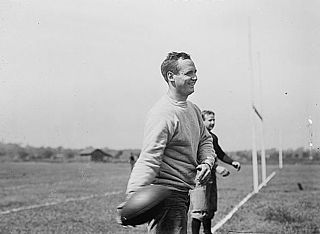
Robert T. Fisher was an American football player and coach. He played college football at Harvard University and was a consensus All-American in 1910 and 1911. He served as the head football coach at Harvard from 1919 to 1925, compiling a record of 43–14–5 and winning the 1920 Rose Bowl. His 1919 team was retroactively recognized as a national champion by a number of selectors. Fisher was one of the original trustees for the American Football Coaches Association (AFCA). He was inducted into the College Football Hall of Fame as a player in 1973.

Arthur Howe was an American football player and coach, teacher, minister and university president. He played college football for Yale University from 1909 to 1911, was the quarterback of Yale's 1909 national championship team, and was a consensus first-team All-American in 1912. He was the head coach of the 1912 Yale football team. Howe was later ordained as a Presbyterian minister and taught at Eastern preparatory schools and at Dartmouth College. From 1930 to 1940, he was the president of Hampton University. He was posthumously inducted into the College Football Hall of Fame in 1973.
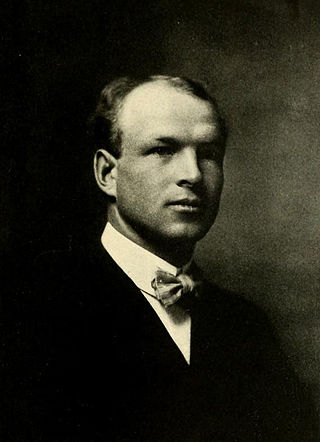
Robert Roswell "Buster" Brown was an American football player, coach of football, basketball, and baseball, and college athletics administrator. After playing college football at Dartmouth College, he coached football teams at Virginia Tech, North Carolina, Washington and Lee, and Tulane. In 1910, he moved to Roswell, New Mexico, where he served for more than 25 years as the football coach and athletic director at the New Mexico Military Institute.

William Philip Edmunds was an American football player, coach of football and basketball, college athletics administrator, and medical doctor. He played college football at the University of Michigan from 1908 to 1910. He was the head football coach at West Virginia University (1912), Washington University in St. Louis (1913–1916), and the University of Vermont (1919), compiling a career college football coach record of 19–22–2. Edmunds was also the head basketball coach at Washington University for on season in 1913–14, tallying a mark of 7–6.

The 1909 College Football All-America team is composed of college football players who were selected as All-Americans for the 1909 college football season. The only selector for the 1909 season who has been recognized as "official" by the National Collegiate Athletic Association (NCAA) is Walter Camp. Many other sports writers and newspapers also selected All-America teams in 1909. The United Press and The Atlanta Constitution both published their own "consensus" All-America teams based on their aggregating the first-team picks of a number of selectors.

Edgar Fauver was an American athlete, coach, university administrator and medical doctor. He played football and baseball for Oberlin College in the 1890s. He later served as the athletic director at Wesleyan University from 1911 to 1937. He was also a pioneer in college athletics for women, coaching basketball and introducing baseball at Barnard College in the 1900s.
Danny Hutchinson was an American college football player and coach. He played football for the University of Pennsylvania in 1908 and 1909 and served as the head football coach at Wesleyan University in 1913.

Morris S. Halliday was a lawyer and politician who represented the forty-first Senate District in the State of New York Senate from 1915 to 1918. He was also a noted football player at Cornell University during the early 20th century. In 1906, he served as the head coach at Hamilton College, compiling a record of 1–5–2. In later life, Halliday was involved in property management in Cleveland, Ohio.
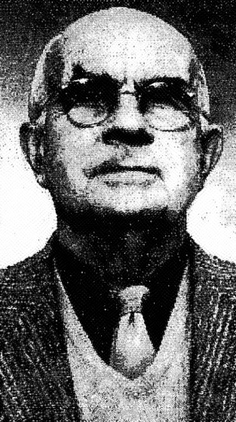
George Brewster Chadwick was an All-American football player and coach. He played college football for Yale University from 1899 to 1902 and was the head coach of the 1903 Yale football team. After working for a time in the hardware and sales fields, Chadwick had a long career as a teacher of English, history and Latin at Eastern private boys' schools.

The History of Michigan Wolverines football in the Yost era covers the period from the hiring of Fielding H. Yost as head coach in 1901 through Yost's firing of Tad Wieman as head coach after the 1928 season. The era includes the brief head coaching tenures of George Little and Tad Wieman. Wieman was head coach during the 1927 and 1928 seasons but contended that he had never truly been allowed to take control of the team with Yost remaining as an assistant coach and athletic director.
References
- ↑ "Award Winners" (PDF). NCAA. 2012. p. 4.
- ↑ "Regnier Is Brown's 1909 Captain" (PDF). The New York Times. November 19, 1908.
- 1 2 "Lieut. Kissel, Lost, Is Son of Banker" (PDF). The New York Times. May 11, 1918.
- ↑ "Regnier To Coach Union: Crack Brown Athlete Will Have Charge of Football Team". Daily Boston Globe. April 23, 1910. Archived from the original on February 16, 2013.
- ↑ "Regnier To Coach Union College Eleven". The Evening News, Providence, R.I. April 23, 1910.
- ↑ "Football Head Coaching Year-by-Year Records". Union College Athletics. Retrieved October 1, 2024.
- ↑ "Adrian E. Regnier". The New York Times. March 4, 1956.